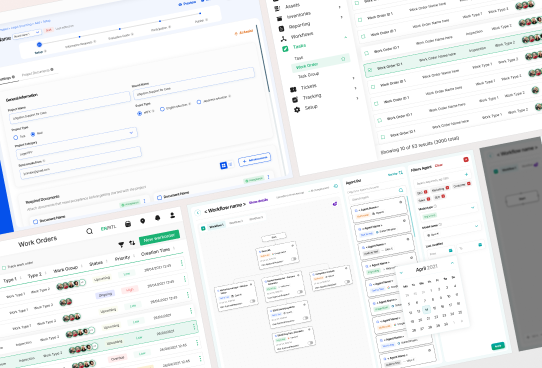Agile Development
<p>Agile development is a methodology used in the software development industry focused on iterative progress, collaboration, and flexibility. It emphasizes the continuous delivery of functional software by breaking down projects into smaller, manageable tasks. This approach allows teams to adapt to changes quickly and deliver high-quality products efficiently.</p>
<p>Agile development traces its roots to the Agile Manifesto, which was created in 2001 by a group of software developers advocating for a more flexible approach to development. The key principles include prioritizing individuals and interactions over processes and tools, customer collaboration over contract negotiation, and responding to change over following a strict plan.</p>
<h2 id="importance-of-agile-development">Importance of Agile Development</h2>
<p>Agile development is crucial for several reasons. Firstly, it enables teams to deliver products faster by focusing on incremental progress. This iterative approach allows for early and continuous delivery of valuable software, ensuring that the product evolves through frequent feedback and adaptation.</p>
<p>Additionally, agile development promotes better collaboration among team members and stakeholders. By involving customers and end-users early in the process, teams can ensure that the product aligns with user needs and expectations. This collaborative environment fosters innovation and creativity, leading to more effective solutions.</p>
<h3 id="components-of-agile-development">Components of Agile Development</h3>
<p>Agile development consists of several key components:</p>
<ul>
<li><strong>Sprints:</strong> Short, time-boxed periods during which specific tasks or features are developed. Sprints typically last between one to four weeks.</li>
<li><strong>Scrum Meetings:</strong> Daily stand-up meetings where team members discuss progress, obstacles, and plans for the day. These meetings help maintain alignment and address issues promptly.</li>
<li><strong>Backlog:</strong> A prioritized list of tasks and features that need to be completed. The backlog is continually updated based on feedback and changing requirements.</li>
<li><strong>Retrospectives:</strong> Regular meetings where the team reflects on the sprint, discusses what went well, what didn’t, and identifies areas for improvement.</li>
</ul>
<h3 id="benefits-of-agile-development">Benefits of Agile Development</h3>
<p>Agile development offers numerous benefits, including:</p>
<ul>
<li><strong>Improved Flexibility:</strong> Agile allows teams to adapt quickly to changing requirements and market conditions, ensuring that the product remains relevant and valuable.</li>
<li><strong>Enhanced Collaboration:</strong> Agile fosters a collaborative environment where team members and stakeholders work closely together, leading to better communication and alignment.</li>
<li><strong>Higher Quality:</strong> The iterative nature of agile development ensures that issues are identified and addressed early, resulting in higher-quality software.</li>
<li><strong>Faster Time-to-Market:</strong> By delivering incremental updates, agile teams can bring products to market faster, gaining a competitive edge.</li>
</ul>
<h3 id="real-world-examples">Real-World Examples</h3>
<p>Many companies have successfully implemented agile development to achieve remarkable results. For instance, <a href="https://www.scrum.org/resources/blog/agile-transformation-case-study-bosch" style="color:#2896FF; text-decoration:underline;">Bosch</a> utilized agile methodologies to enhance their software development processes, resulting in improved productivity and quality.</p>
<p>In the climate tech sector, <a href="https://www.leanix.net/en/company/customers/flixbus" style="color:#2896FF; text-decoration:underline;">Flixbus</a> adopted agile practices to innovate and scale their sustainable transportation solutions rapidly, addressing the growing demand for eco-friendly travel options.</p>
<h2 id="challenges-of-agile-development">Challenges of Agile Development</h2>
<p>Despite its benefits, agile development also presents some challenges:</p>
<ul>
<li><strong>Requires Cultural Shift:</strong> Transitioning to agile often requires a significant cultural change within the organization, which can be met with resistance.</li>
<li><strong>Needs Skilled Team Members:</strong> Agile teams must possess strong skills in collaboration, communication, and adaptability to be effective.</li>
<li><strong>Potential for Scope Creep:</strong> The flexibility of agile can sometimes lead to scope creep, where additional features are continuously added, potentially delaying project completion.</li>
</ul>
<h3 id="overcoming-challenges">Overcoming Challenges</h3>
<p>To effectively implement agile development, organizations can adopt several strategies:</p>
<ul>
<li><strong>Provide Training:</strong> Offering training and resources on agile methodologies can help team members understand and embrace the new approach.</li>
<li><strong>Foster a Collaborative Culture:</strong> Encouraging open communication and collaboration among team members and stakeholders can help create a supportive environment for agile practices.</li>
<li><strong>Maintain a Clear Vision:</strong> Clearly defining project goals and priorities can help prevent scope creep and ensure that the team remains focused on delivering value.</li>
</ul>
<h2 id="conclusion">Conclusion</h2>
<p>Agile development is a powerful methodology that can significantly enhance the efficiency, flexibility, and quality of software development projects. By embracing its principles and practices, organizations can better navigate the complexities of modern software development and deliver valuable products that meet user needs.</p>
<p>Learn more about improving your agile development strategies by exploring resources from reputable organizations like <a href="https://www.agilealliance.org/" style="color:#2896FF; text-decoration:underline;">Agile Alliance</a> and <a href="https://www.scrum.org/" style="color:#2896FF; text-decoration:underline;">Scrum.org</a>.</p> <p>If you’re looking for inspiration to elevate customer and user experience for enterprise-grade products, View our work with the Ministry of Health of Saudi Arabia for curating the UX of an <a href="https://www.whatifdesign.co/work/enterprise-software-for-hospitals" style="color:#2896FF; text-decoration:underline;">Asset Management Tracking Platform</a></p>
<p>Ready to get started? <a href="https://cal.com/akhilak/what-if-design?duration=30" style="color:#2896FF; text-decoration:underline;">Book a 1:1 consultation call</a> with us today.</p>

Let's scale your impact with great design.
Free consultation, no sales pitch
Thank you! Your submission has been received!
Enter you email correctly!
Let’s talk
Nothing great is built alone.
Let’s connect about your vision, our work and how we can collaborate.
Get in touch
© 2025 What if Design
Stripe climate partner

